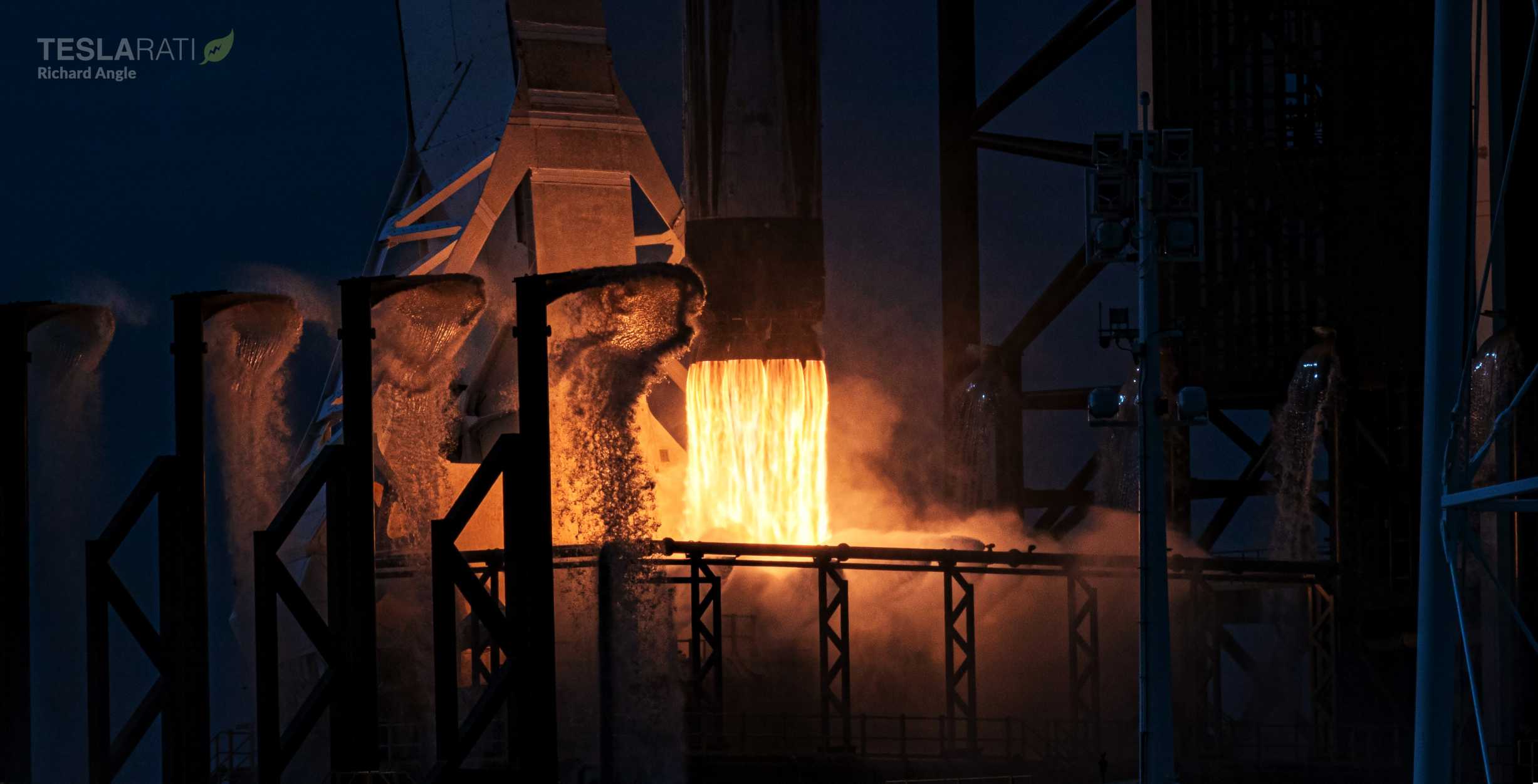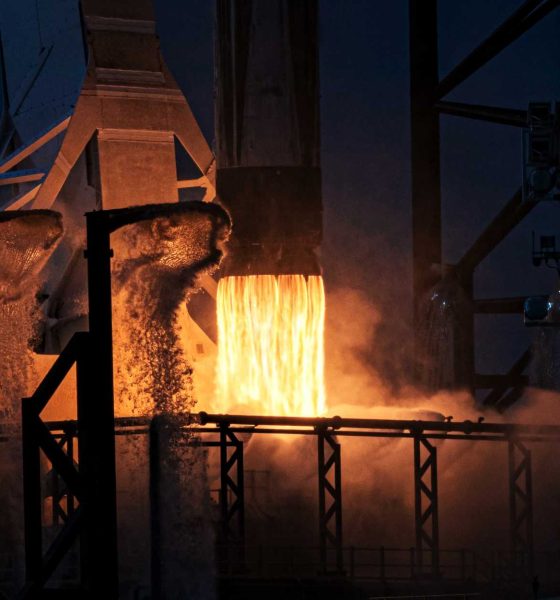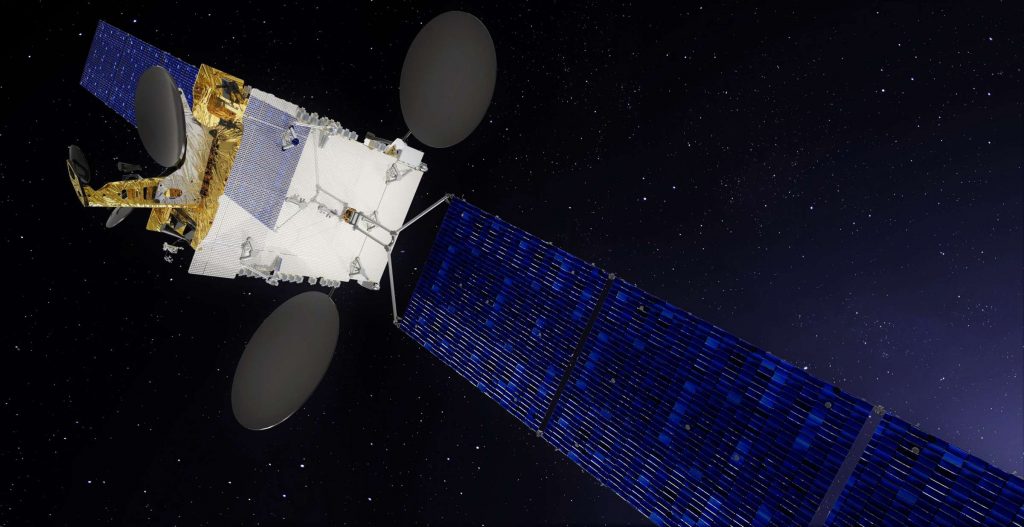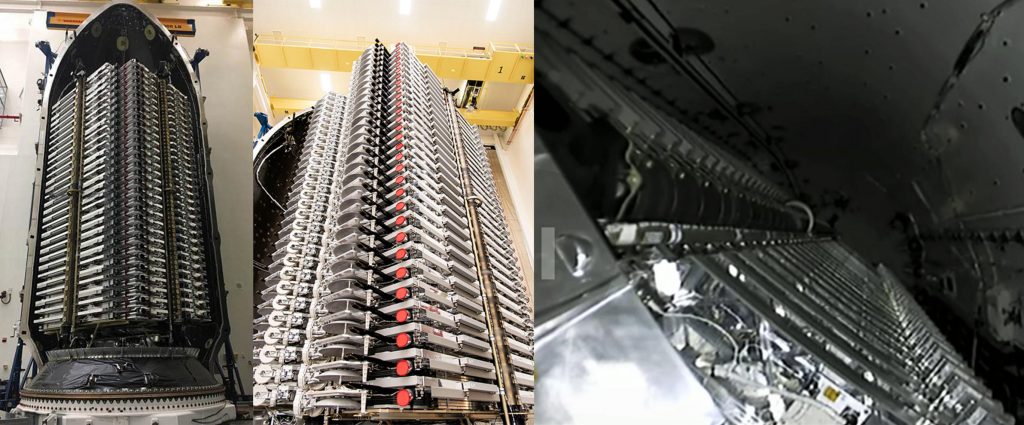

News
SpaceX just won its first Falcon 9 launch contract of the year
SpaceX has won its first Falcon 9 launch contract of 2020, adding to an already substantial backlog of missions scheduled to launch over the next several years.
Commercial Egyptian satellite communications provider Nilesat reportedly awarded SpaceX the contract on January 21st and announced the news the following day. Nilesat previously revealed plans to purchase an upgraded communications satellite from European company Thales Alenia Space in December 2019 – a contract likely worth around $50-100 million.
Nilesat 301 will replace Nilesat 201 and is expected to weigh around 4.1 metric tons (9050 lb) when it launches in 2022, meaning that SpaceX should easily be able to perform the mission with a Falcon 9 rocket and still be able to recover the booster by drone ship.
Back in February 2018, SpaceX Vice President of Build and Flight Reliability Hans Koenigsmann revealed that the company’s backlog of launches was valued at more than $12 billion. Generously assuming an average cost of $80M per backlogged mission, that would translate to more than 150 separate launches — strongly implying either that she was including the company’s own Starlink missions or that SpaceX has silently won several major constellation-class launch contracts in recent years.
Based on public info, SpaceX has roughly 55 customer launches on its manifest. The company also intends to launch as many as 24 dedicated Starlink missions this year and will need at least another 40-50 on top of that to complete the first phase of the broadband internet satellite constellation (~4400 spacecraft). Meanwhile, SpaceX has won at least nine separate launch contracts – two Falcon Heavy missions and seven Falcon 9s – in the last 18 months, but has launched 22 customer payloads in the same period.
In fewer words, SpaceX is effectively launching its existing commercial missions much faster than it’s receiving new contracts. In 2019, for example, the company launched only 11 commercial missions – 13 total including two internal 60-satellite Starlink launches. SpaceX launched 21 times in 2018, a record the company initially hoped to equal or even beat last year, but – for the first time ever – the launch company was consistently ready before its customers were.

Thankfully, while at least slightly concerning from a more traditional launch provider perspective, the fact that SpaceX is lately launching more commercial missions than it wins contracts for is being dealt with in a way no company has before. By designing and manufacturing its own Starlink satellite constellation, ultimately meant to include tens of thousands of spacecraft in orbit, SpaceX will very soon become its own biggest launch customer.
By continuing to launch a dozen or so commercial missions annually and picking up the slack with anywhere from one to several dozen additional Starlink launches, SpaceX may find a way to more or less subsidize its own launch needs and ensure that it almost always has substantial revenue coming in. That set-up almost certainly can’t last forever, but if SpaceX can launch a few thousand Starlink satellites in the next few years, there is a good chance that the company’s income as an Internet Service Provider (ISP) services can make the constellation self-sustaining – perhaps even profitable.

At the same time, SpaceX is also equally – if not more so – focused on lowering the operational cost of its Falcon 9 and Falcon Heavy launch vehicles by heavily leaning on reusability. Once fairing recovery and reuse is more routine, SpaceX could feasibly perform orbital-class launches with a material cost of $25 million or less, giving the company the option of both cutting costs and raising its profit margins. By lowering Falcon 9 launch contract costs, it’s possible that SpaceX will actually be able to significantly expand the market for orbital launch services.
All things considered, SpaceX’s launch business is entering new and exciting territory and it’s hard to say or know what exactly is going to happen in the next several years. For now, January 22nd’s seemingly routine Nilesat 301 launch contract award is hopefully just the tip of the 2020 iceberg.
Check out Teslarati’s Marketplace! We offer Tesla accessories, including for the Tesla Cybertruck and Tesla Model 3.

News
Tesla FSD fleet is nearing 7 billion total miles, including 2.5 billion city miles
As can be seen on Tesla’s official FSD webpage, vehicles equipped with the system have now navigated over 6.99 billion miles.

Tesla’s Full Self-Driving (Supervised) fleet is closing in on almost 7 billion total miles driven, as per data posted by the company on its official FSD webpage.
These figures hint at the massive scale of data fueling Tesla’s rapid FSD improvements, which have been quite notable as of late.
FSD mileage milestones
As can be seen on Tesla’s official FSD webpage, vehicles equipped with the system have now navigated over 6.99 billion miles. Tesla owner and avid FSD tester Whole Mars Catalog also shared a screenshot indicating that from the nearly 7 billion miles traveled by the FSD fleet, more than 2.5 billion miles were driven inside cities.
City miles are particularly valuable for complex urban scenarios like unprotected turns, pedestrian interactions, and traffic lights. This is also the difference-maker for FSD, as only complex solutions, such as Waymo’s self-driving taxis, operate similarly on inner-city streets. And even then, incidents such as the San Francisco blackouts have proven challenging for sensor-rich vehicles like Waymos.
Tesla’s data edge
Tesla has a number of advantages in the autonomous vehicle sector, one of which is the size of its fleet and the number of vehicles training FSD on real-world roads. Tesla’s nearly 7 billion FSD miles then allow the company to roll out updates that make its vehicles behave like they are being driven by experienced drivers, even if they are operating on their own.
So notable are Tesla’s improvements to FSD that NVIDIA Director of Robotics Jim Fan, after experiencing FSD v14, noted that the system is the first AI that passes what he described as a “Physical Turing Test.”
“Despite knowing exactly how robot learning works, I still find it magical watching the steering wheel turn by itself. First it feels surreal, next it becomes routine. Then, like the smartphone, taking it away actively hurts. This is how humanity gets rewired and glued to god-like technologies,” Fan wrote in a post on X.
News
Tesla starts showing how FSD will change lives in Europe
Local officials tested the system on narrow country roads and were impressed by FSD’s smooth, human-like driving, with some calling the service a game-changer for everyday life in areas that are far from urban centers.

Tesla has launched Europe’s first public shuttle service using Full Self-Driving (Supervised) in the rural Eifelkreis Bitburg-Prüm region of Germany, demonstrating how the technology can restore independence and mobility for people who struggle with limited transport options.
Local officials tested the system on narrow country roads and were impressed by FSD’s smooth, human-like driving, with some calling the service a game-changer for everyday life in areas that are far from urban centers.
Officials see real impact on rural residents
Arzfeld Mayor Johannes Kuhl and District Administrator Andreas Kruppert personally tested the Tesla shuttle service. This allowed them to see just how well FSD navigated winding lanes and rural roads confidently. Kruppert said, “Autonomous driving sounds like science fiction to many, but we simply see here that it works totally well in rural regions too.” Kuhl, for his part, also noted that FSD “feels like a very experienced driver.”
The pilot complements the area’s “Citizen Bus” program, which provides on-demand rides for elderly residents who can no longer drive themselves. Tesla Europe shared a video of a demonstration of the service, highlighting how FSD gives people their freedom back, even in places where public transport is not as prevalent.
What the Ministry for Economic Affairs and Transport says
Rhineland-Palatinate’s Minister Daniela Schmitt supported the project, praising the collaboration that made this “first of its kind in Europe” possible. As per the ministry, the rural rollout for the service shows FSD’s potential beyond major cities, and it delivers tangible benefits like grocery runs, doctor visits, and social connections for isolated residents.
“Reliable and flexible mobility is especially vital in rural areas. With the launch of a shuttle service using self-driving vehicles (FSD supervised) by Tesla in the Eifelkreis Bitburg-Prüm, an innovative pilot project is now getting underway that complements local community bus services. It is the first project of its kind in Europe.
“The result is a real gain for rural mobility: greater accessibility, more flexibility and tangible benefits for everyday life. A strong signal for innovation, cooperation and future-oriented mobility beyond urban centers,” the ministry wrote in a LinkedIn post.
News
Tesla China quietly posts Robotaxi-related job listing
Tesla China is currently seeking a Low Voltage Electrical Engineer to work on circuit board design for the company’s autonomous vehicles.

Tesla has posted a new job listing in Shanghai explicitly tied to its Robotaxi program, fueling speculation that the company is preparing to launch its dedicated autonomous ride-hailing service in China.
As noted in the listing, Tesla China is currently seeking a Low Voltage Electrical Engineer to work on circuit board design for the company’s autonomous vehicles.
Robotaxi-specific role
The listing, which was shared on social media platform X by industry watcher @tslaming, suggested that Tesla China is looking to fill the role urgently. The job listing itself specifically mentions that the person hired for the role will be working on the Low Voltage Hardware team, which would design the circuit boards that would serve as the nervous system of the Robotaxi.
Key tasks for the role, as indicated in the job listing, include collaboration with PCB layout, firmware, mechanical, program management, and validation teams, among other responsibilities. The role is based in Shanghai.
China Robotaxi launch
China represents a massive potential market for robotaxis, with its dense urban centers and supportive policies in select cities. Tesla has limited permission to roll out FSD in the country, though despite this, its vehicles have been hailed as among the best in the market when it comes to autonomous features. So far, at least, it appears that China supports Tesla’s FSD and Robotaxi rollout.
This was hinted at in November, when Tesla brought the Cybercab to the 8th China International Import Expo (CIIE) in Shanghai, marking the first time that the autonomous two-seater was brought to the Asia-Pacific region. The vehicle, despite not having a release date in China, received a significant amount of interest among the event’s attendees.








